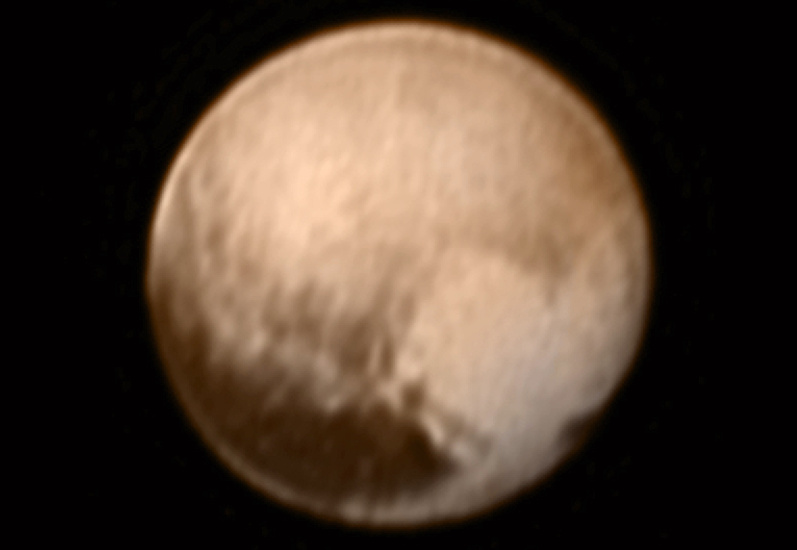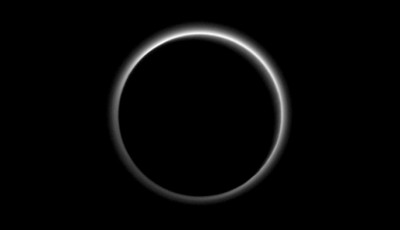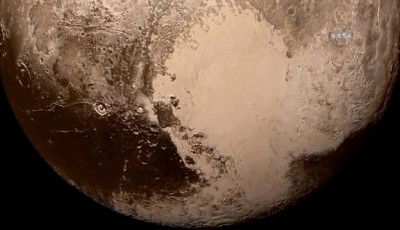Large heart-shaped feature found on Pluto
Most prominent are an elongated dark feature at the equator, informally known as “the whale“, and a large heart-shaped bright area measuring a few 2,000 kilometres across on the right.
These are the most recent high-resolution views of Pluto sent by NASA’s New Horizons spacecraft, including one showing the four mysterious dark spots on Pluto that have captured the imagination of the world.
“We’re at the “man in the moon” stage of viewing Pluto”, John Spencer, deputy leader of the geology, geophysics and imaging team at the Southwest Research Institute in Boulder, Colorado, said Tuesday in a release. But thanks to the maps developed from New Horizons’ data, recorded from roughly 7.8 million miles away between July 1 and July 3, researchers are now able to see the real detail of its coloring and texture. The spacecraft will fly within 7,750 miles – the approximate distance between Seattle and Sydney.
Presently, the probe is moving at a speed of about 14kms per second and that is pretty fast to get into orbit on July 14. By July 15, the public should have access to an image of Pluto on-par with shots of Earth taken from space.
At its closest encounter, New Horizons will be 13,000km above the surface of Pluto. Initially New Horizon journeyed to Pluto in hibernation; it took 9 years and 3 billion miles for it to get near Pluto.
“The New Horizons team immediately went into action”, said Jim Green, director of Planetary Science at NASA, during a press conference Monday.
Science operations were temporarily disabled when the spacecraft was put into “safe mode”, however, mission scientists have concluded that the planned science observations that have been unable to be performed during the spacecraft’s recovery will not affect the mission’s primary objectives.
The spacecraft is scheduled to come as close as 6,200 miles from the surface of the dwarf planet.
The New Horizons mission is the first of its kind to explore the icy bodies that are found mostly in the Kuiper Belt beyond Neptune.
On Wednesday we’re going to see photos of Pluto so detailed that they’ll blow our minds.












